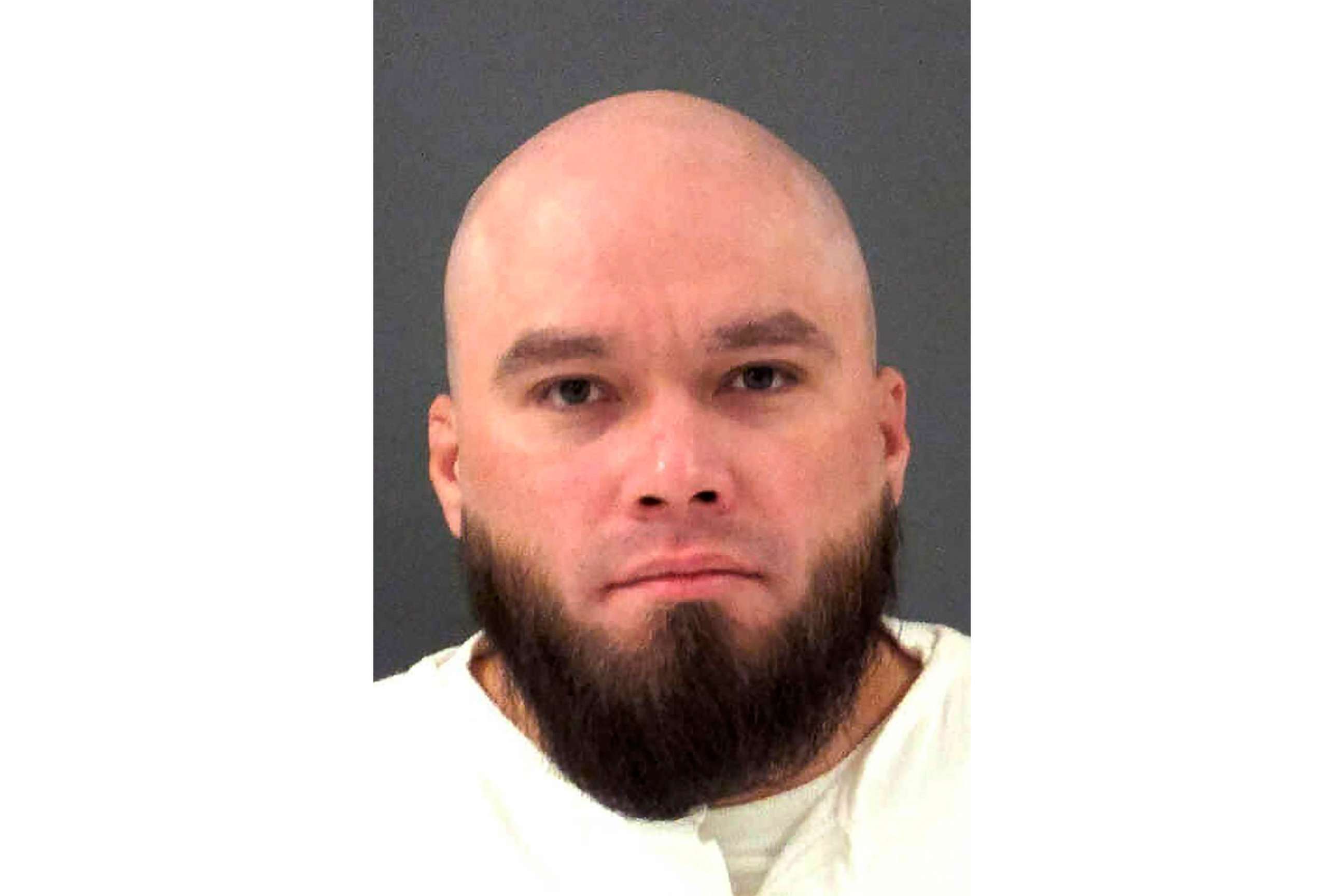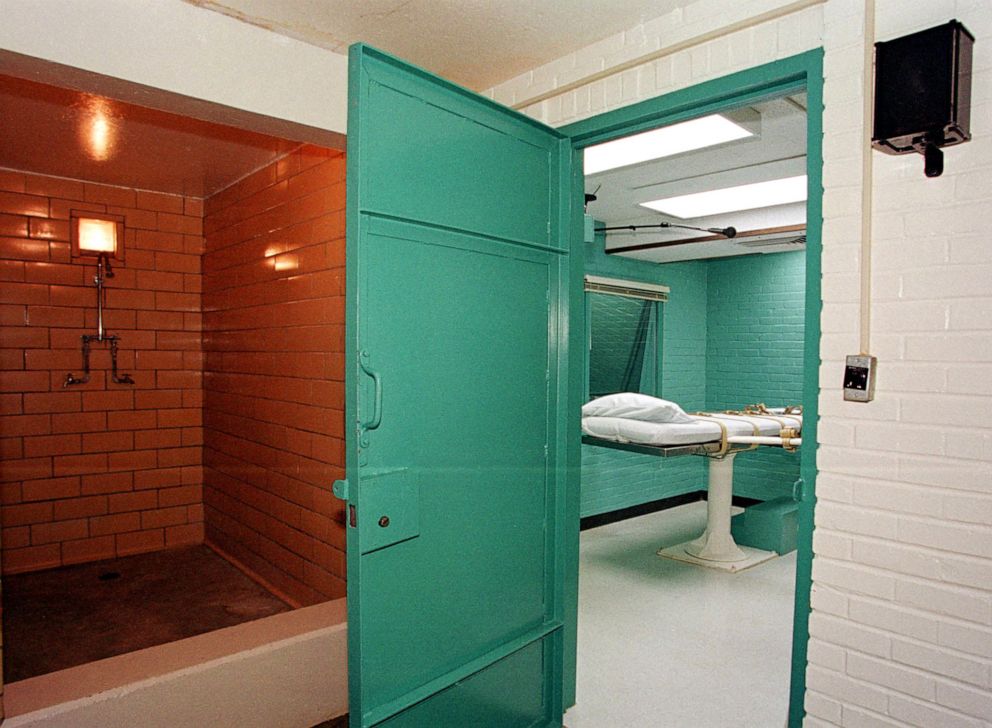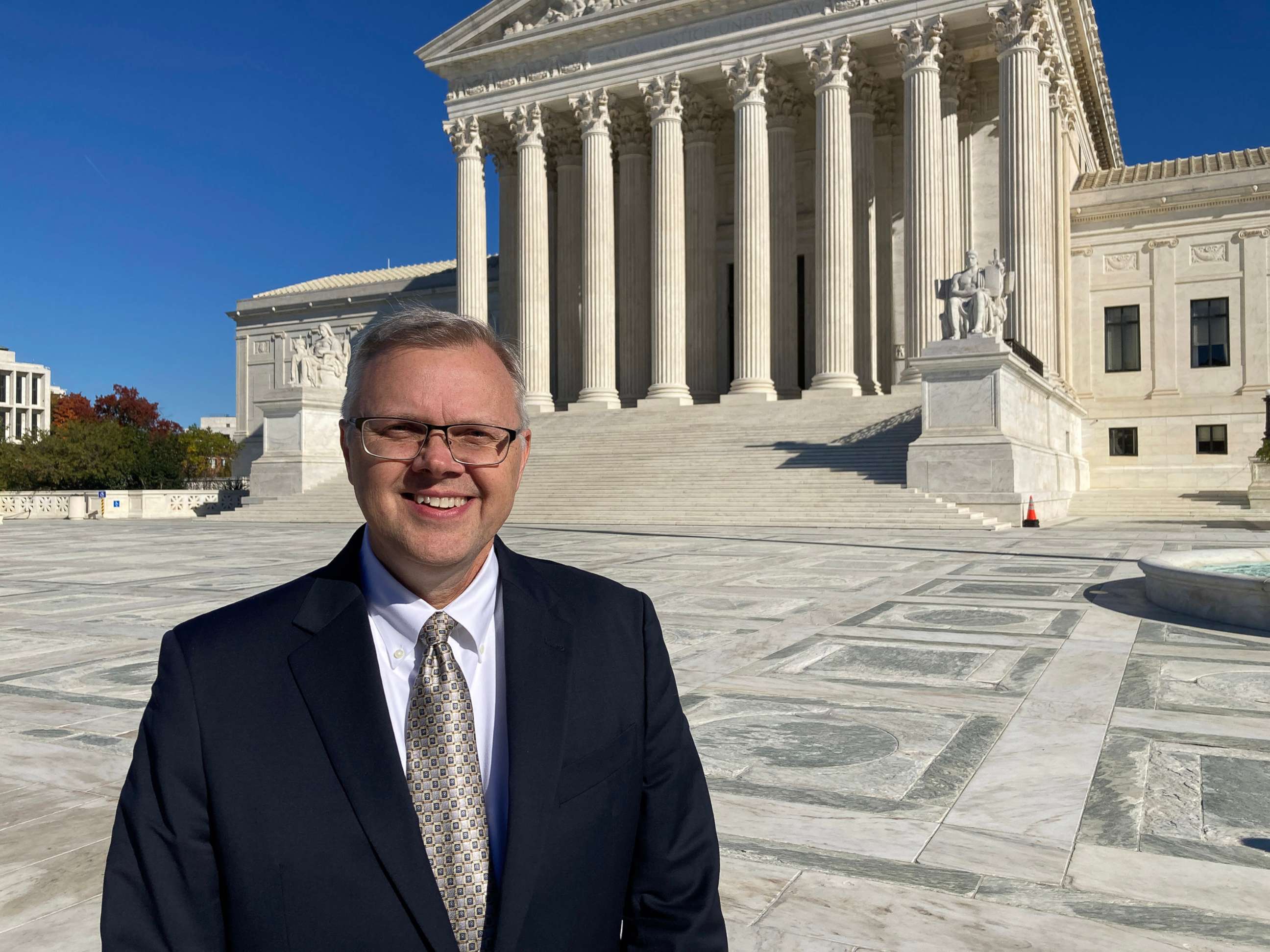Texas pastor on Supreme Court death chamber case: What's the harm of prayer, touch?
A death-row inmate wants the pastor at his side when he's executed.
Pastor Dana Moore traveled from Corpus Christi, Texas, to the steps of the U.S. Supreme Court this week to pray for the ability to pray out loud and lay his hands on a man being executed.
Moore ministers to men on Texas' death row, including John Ramirez, a 37-year-old prisoner facing the death penalty for the 2004 murder of a convenience store clerk, Pablo Castro.
"They made some bad decisions. It's tragic," Moore, 58, said in an interview with ABC News, "but John -- I saw the face of Jesus."

Ramirez, who is Christian, wants Moore, a Baptist minister, inside the death chamber to pray out loud and lay a hand on his body at the moment he receives a lethal injection of phenobarbital.
Audible prayer and touching by a Texas corrections chaplain had been commonplace for more than 30 years of executions, but the state banned the practice in 2019, citing security concerns.
"What's the harm of that -- having my hand on his foot?" Moore asked. "It is a sincere request."
During oral arguments at the court Tuesday, Ramirez’s legal team asked the justices to force Texas to reverse course, invoking a federal law meant to protect the free exercise of religion and challenging the state’s claim that there is no less restrictive alternative.

"If the real concern is the compelling interest, the safety of -- the security protocols of the execution," said Ramirez attorney Seth Kretzer, "there simply exists -- as far as everyone has looked for a hundred years -- not a single instance of any chaplain ever causing any disturbance."
Texas Solicitor General Judd Stone argued that a botched execution would be "catastrophic" and that the presence of a private chaplain within the tight confines of the execution chamber heightens the risk that something could go wrong.
"We're attempting to minimize risk almost all the way to zero, as much as we reasonably can," Stone said.
The justices grappled openly with how to balance that risk with the inmate’s religious rights protected under federal law. Several members of the court appeared conflicted about where to draw the line.

"Is it touch anywhere on his body that will satisfy his religious needs?" asked Chief Justice John Roberts.
"Yes," replied Kretzer, noting the foot, head, heart or arm could all suffice. "These are still pretty far removed from the point at which that IV will be injected."
"I don’t think either the hand or the heart is very far removed from the IV injection site," Roberts replied.
Justice Brett Kavanaugh appeared most sympathetic to Texas’ hard line against chaplain-inmate interaction inside the death chamber.
"It does increase the risk of a problem some," said Kavanaugh. "How do we as a court say, no, actually, state, your compelling interest in reducing the risk to close to zero, it's not good enough, it's not compelling?"
Justice Samuel Alito worried about a ruling for Ramirez opening the floodgates to endless litigation over other inmates' unique circumstances and special religious requests.
"We are going to get an unending stream of variations about both of these things, about touching different parts of the body, about the type of prayer, the -- the singing, chanting, number of people in the room?" Alito asked Kretzer. "Is this just what's going to happen?"
The Biden administration participated in the Supreme Court argument but stopped short of taking sides in the dispute. Deputy Solicitor General Eric Feigin said the Justice Department’s Bureau of Prisons has allowed audible prayer during recent federal executions and in one case at least some touching by a chaplain.
"If we wanted to have the risk be absolutely zero, there would be no spiritual adviser in the chamber whatsoever. However, BOP was able to carry out 11 executions with a spiritual advisor in the chamber," Feigin said. "It had a security person next to the spiritual adviser at all times."
Nearly a dozen faith groups and religious liberty advocacy organizations, including the U.S. Conference of Catholic Bishops and Christian Legal Society, have filed briefs supporting Ramirez.
"Are you aware in any other states of an execution going astray because of an outside spiritual adviser?" Justice Elena Kagan asked Texas Solicitor General Stone.
"No," Stone replied. "This is the sort of thing we would anticipate to be a very low likelihood of occurring. It just has a catastrophic potential of potential damage if it did."
Moore, who declined to share with ABC News his views of the morality of the death penalty, said his desire to pray with Ramirez at his moment of death is sincere and unobtrusive.
"I don't know how [the court] will rule but there's hope. I have hope for John," Moore said.
"We'll be less than two arms' lengths away from the viewing gallery and the victim's family," he said. "The walls are paper thin. I am cognizant of that and the grief they are still going through. But I will prayer for John and for his victim and family. That's my calling. That's why I do what I do."
The justices are expected to hand down a decision in early 2022.




